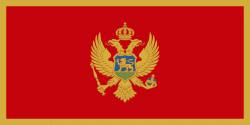Podgorica (Cyrillic: Подгорица, ; lit. 'under the hill') is the capital and largest city of Montenegro. The city was formerly known as Titograd (Cyrillic: Титоград, ) between 1946 and 1992—in the period that Montenegro formed, as the Socialist Republic of Montenegro, part of the Socialist Federal Republic of Yugoslavia (SFRY)—in honour of Marshal Josip Broz Tito.
The surrounding landscape is predominantly mountainous terrain. The city is just north of the Lake Skadar and close to coastal destinations on the Adriatic Sea. Historically, it was Podgorica's position at the confluence of the Ribnica and Morača rivers and at the meeting-point of the fertile Zeta Plain and Bjelopavlići Valley that encouraged settlement.
Podgorica is written in Cyrillic as Подгорица, ;, ; Podgorica literally means "area below Gorica". Gorica, a diminutive of the word Gora (Cyrillic: Гора) which is another word for Mountain or Hill, means "little/small hill", is the name of one of the cypress-covered hillocks that overlooks the city center. Some three kilometres (3 km) north-west of Podgorica lie the ruins of the Roman-era town of Doclea, from which the Roman Emperor Diocletian's mother hailed. In later centuries, Romans "corrected" the name to Dioclea, guessing wrongly that an i had been lost in vulgar speech. Duklja is the later South Slavic version of same word. At its foundation (some time before the 11th century), the town was called Birziminium (In Illyrian or nowadays Albanian language means Black Hole). In the Middle Ages, it was known as Ribnica. The name Podgorica was used from 1326. From 1946 to 1992, the city was named Titograd in honour of Josip Broz Tito, the President of Socialist Federal Republic of Yugoslavia from 1953 to 1980. In 1992 the city changed its name to "Podgorica", which it remains today.




















